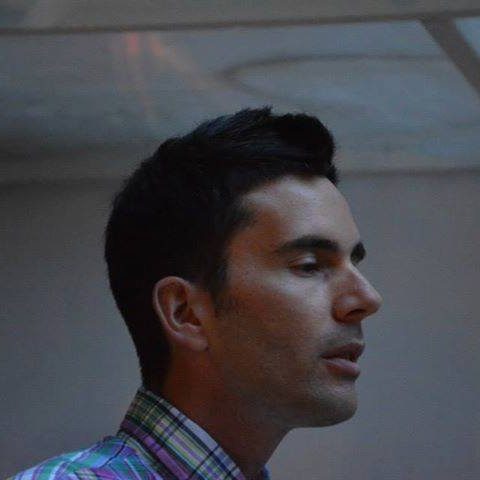Philosophy (Epistemology/Ethics)
Publication Types:

Towards a surveillant reality in tennis
Here we attempt to present an application of epistemologically significant concepts that have already been described in depth in previous works. First and foremost, we refer to the dual paired method(s) of epistēmē, which is critically different from the scientific method due to a very common misconception ubiquitous among scholars and academics al over; but we also refer to surveillance, theory and truth, as well as the two new, save relevant, concepts of surveillant reality and experiential reality. The example is taken from tennis, a field to which one of the authors regularly contributes. We shall attempt to explore the ways in which the dual paired method of epistēmē is applied to sports science (in tennis) and, based on that, to clarify the concept and the differences between surveillant reality and experiential reality.

Ontological Causality as the Demarcation Criterion of Scientific & Philosophical Fields: Things and Objects vs. Criteria vs. Processes
This paper follows an interdisciplinary approach through at least three disciplines, i.e. logic, ontology and sociology (of expertise). Its aim is to provide a useful tool for the fields related to the study of expertise to demarcate the various scientific fields. In the process several issues are also addressed; issues such as causation and negation that are equally important for this discussion but current literature does not and maybe cannot cover.

An epistemological framework to appreciate the limits of predatory publishing
The concept of “predatory” publishing, despite many studies of the phenomenon,
remains unclear. This paper visualizes this theme through an epistemological
perspective, and claims that conceptual limitations emerge from an impressionism of
idealization, the entrapment of cause and effect induced by a journalology-based
perspective, and entrenched fantasized extraction, imagination and divination of what
constitutes the truth, in essence, a path never followed by an epistēmōn. Reality, proof,
verification, recorded observations and their interpretations have been pivoted to fit
the theoretical flavor of the day, an entity one day being predatory, the next not.
Ephemeral judgements of predatory may have been built on boundless disregard for
common sense, and yet, these have led to some scientists’ apotheosis, almost
oblivious of the intangibility of “valid” or the infinitesimal continuum of “predatory”.
Maybe, fault-ridden authoritarian argumentative disabilities are at fault.
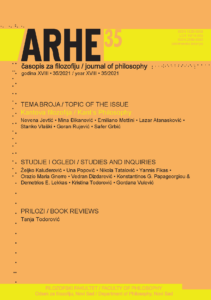
Epistēmē VS science
Is “science” the corresponding concept of its Greek progenitor, epistēmē? Traditionally, they were thought of as identical concepts. They are not, in more than one way, and the reader is called to evaluate them not based on their chronological order but on the specific systemic characteristics presented here.The crucial difference between the epistemonic (from epistēmē) method and the scientific method will also be presented.One of the main differences that will be discussed is related to logic, both as a concept and as a theory. What the authors present here is by no means a synthesis of past ideas; we do acknowledge that some similar ideas might have appeared in the past but never in the form presented here or within the system proposed in what follows. This work is not about who did not say whatever we propose or who might have some similar thoughts within some irrelevant context. All ideas here stem from original work done solely by us and the ensuing system is unique and of utmost important being also an external critique –the only trulyexternal critique –to the institution of modern science and to the grave inconsistencies “scientists” cannot (for whatever reason) notice in it anymore.

Verification in theory and in the sciences
In this work, we undertake the task of laying out some basic considerations towards straightening out the foundations of an abstract logical system. We venture to explain what theory is as well as what is not theory, to discriminate between the roles of truth in theory and in reality, as well as to open the road towards clarifying the relationship between theory and the real world. Etymological, cultural and conceptual analyses of truth are brought forth in order to reveal problems in modern approaches and to set the stage for more consistent solutions. One such problem addressed here is related to negation per se, to its asymmetry towards affirmative statements and to the essential ramifications of this duality with respect to the common perceptual and linguistic aspects of words indicating concepts akin to truth in various languages and to attitudes reflected and perpetuated in them and to their consequent use in attempted informal or formal logic and its understanding. Finally, a case study invoking the causes or “causes” of gravity both clarifies and reinforces the points made in this paper.

Towards the model of contributory expert generalists
The study of expertise has focused on the concept of specialization and specialists, both from a sociological and a biological perspective. It has been taken for granted that expertise concerns only specialization; even individuals characterized as “polymaths” or homo universalis are considered to be expert specialists in many fields. Can expert specialists in many fields exist today? This question is deceitful or irrelevant since it cannot accommodate the concept of individuals who are neither specialists nor “poly-specialists” but have knowledge of a different level: not analytic, but rather, synthetic and abstract. Here, a new type of expert is proposed, contributory expert generalist. Their necessity stems from the methodology of epistēmē proper. Their characteristics will be identified and discussed, some empirical examples will be given and their expert status is going to be discussed using various theoretical approaches on expertise, namely SEA, SEE and STS (Science of Exceptional Achievement, Study of Expertise and Experience, Science Technology and Society).

On Sports Biomechanics Methodology
Sports biomechanics is one of the most fascinating and formalised disciplines in sports science. While it uses a host of methods, on closer look, it lacks a thorough epistemological / methodological foundation besides what it implicitly borrows from the sciences it uses, such as mathematics and physics. Here, I shall attempt to portray what such a basic epistemological understanding would include and also try to address issues directly related to such an approach. I shall start by describing the most general context in which sports biomechanics exist and then, I will attempt to provide a structural context to bridge the gap between sports biomechanics and practice. Concluding with some ideas about the future of biomechanics.

Logical Analysis and Validation of Publications in Bioinformatics
Taking as a starting point that the only proving method in mathematics is logic, as for example is used in the logical setup of the paper (arguments, i.e. premises leading to conclusions, logical inferences) we describe a new tool for analysis and validation of publications in the field of Bioinformatics.
In striking contrast to the abundance of statistical programs and packages available to Bioinformatics researchers, no such logical tool is available to them. Therefore, the creation of such a tool is necessary; a form of expert system that may do the following procedures:
- Evaluate papers giving a score of logical consistency and completeness (i.e. how many conclusions were investigated in comparison to all possible conclusions based on the set of premises used by the researchers).
- Help researchers and academics better plan their protocols by automating the process of analysis of the premises given.
- Be able to locate and analyze arguments directly from the text of the scientific paper, from certain parts of it (e.g. the “conclusions” section, or even from the whole text, based on advanced AI algorithms.
• Provide a new standard for future publications in any form and later, in any scientific field.
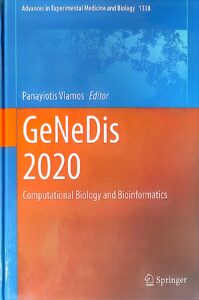
Expert characteristics: implications for expert systems
While expert systems are Artificial Intelligence (AI) agents, they share many common characteristics with human experts. As technology progresses, such systems are not just able to make simple decisions following “simplistic” linear logical protocols; they “behave” as real experts in at least two ways: by demonstrating superb decision-making skills and by conforming to the social norms for expertise, i.e. they “feel” as human experts. A review of the common characteristics of human experts may have important implications for the direction of the development for such systems. Implications for bioinformatics and future research (esp. concerning the accompanying concept of “expert generalist”) are also discussed.

The predicate fabric of abstraction: the hard test of logical inversion
The paper starts with an ultra-compact deposition on the two ubiquitous complementary dual pairwise organized methodological procedures of episteme, i.e. the analytic method (analysis – synthesis)& the abstract process (abstraction – structure). Next, the authors examine some ground rules and concepts pervading causality and inference and their junctions, attempting to discriminate between information flow in empiricism and theoretical causality of proof; only then is a connection between them attempted and investigated. In the authors’ effort to establish a consistent theoretical outlook, if not approach, the technique of logical inversions is also used as a partial yet powerful guide elucidating how successful their attempts were. Apart from clarifying some opaque concepts in logic, in set theory and in the staple empiricism of science, this paper also sets the stage for questioning whether some grave flaws could be located in traditional, save ill-founded, notions in hardcore science, on occasion of the par excellence typical example of fundamental and never challenged approaches in physics. The fact that something has been accepted as holding does not at all mean that cracks may not be located in its epistemological makeup at some posterior time. And it is the text’s task here to ask some painful questions and try to set some realistic boundaries to things by aptly utilizing available irresistible standard «tricks» from logic and from the classical scientific method and from reverting to fruitful techniques and to telling examples, pushing hard for convincing answers.
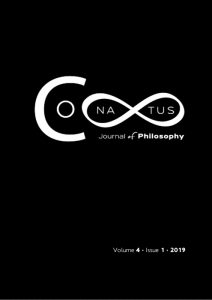
The Analytic Model of Consent and the Square of Opposition
Modelling consent is a process prior to any discussion about it, be it theoretical or practical. Here, after examining consent, I shall attempt to present a “logical generator” that produces all different cases of consent (and/or of non-consent), so that afterwards we may articulate a two-dimensional model which will enable us to coherently demonstrate all possible types of consent. The resulting model will be combined with Aristotle’s square of opposition, offering us even greater insight. I shall claim that full(y) informed consent is an archetype, not realized in most cases; it is just one case out of hundreds more. I shall conclude with an educational model for consent, the principle of specificity, arguing that if we wish to both understanding consent and become more adept in exercising it, we need a targeted educational system – not just “better education” in general.

On the Methodology of the Analytic Method: Historical Account, Epistemological Suggestions, Stages
In this paper we attempt a good unearthing, sound tackling and effective pointing out of the critical key features permeating one of the two cornerstones supporting the total coordination and interplay underlying the complex epistemonic and scientific method: and that would be the constituent methodology concisely known under the cover name “analytic method”. In this attempt, however, it becomes evident very soon that the direct similarities, reciprocities and complementarities to the other cornerstone, concisely known as “abstractive method”, must also be laid out concurrently; the two share the same needs and behaviours, while they must also be mutually disambiguated and framed in inner consistencies and mutual contrast, to assert proper theoretical coverage, fruitful application and mutual impermeability overall. Thus, both of them end up being discussed in parallel. To that end, simple and intuitively appealing proposals are sought, expressed and projected, regarding their key attributes, range and boundaries, both generally and especially in between them; their defining points and most essential requirements are sought out and expressed, their functional standards are suggested and the stages of its application are prescribed, according to a shadowy yet rigorous gradual breakup and assembling procedure derived from elementary combinatorics and set theory. All this gets illustrated in the schematic stages to be pursued in two relevant enlightening analytic examples, chosen so as to also partake of a crucial share of an abstractive aspect. Two relevant issues are touched upon along the way in the vein of the present tone of quest, namely those concerning basic prerequisites of logic employed and the confusion and effective double-talk underlying the term “theory” (vs. “theories”) and the consequent term-induced ambiguity in the concepts. On the subject, analysis is the breakup of an “entity” into its “components” and synthesis is its retroactive operation, or “return”, from “components” to the “entity”. Similarly, “abstraction” is the course from an entity to a nesting of successive general categories, and “structure” is the other way around from more general categories towards smaller contained assemblages of entities, each uniformly exhibiting “partial manifestations” of the said categorical feature. The semantic context and its set-theoretical implications are of paramount importance here. What is definitively taken as a “unity”, in each case, is a matter of choice, and of mutual and binding agreement among the parties conducting the study and its discussion. Beyond that, figuratively speaking, the analytic method concerns “anatomical autopsies” digging into such unities constituting elements or members of sets, whereas the abstractive method concerns attributes connecting sets of such “unities” and their nested supersets and subsets. We close by sketching the stage-by-stage application as illustrated in two case-studies: one from Cultural Studies, regarding a model, focusing on the primitive ternary ritual of the performing arts [ΚΛΜ], discussed complete with some key side issues, and accompanied by considerations on the triple of the material arts [ΧΨΩ], and then one from Bioethics regarding all possible partial and combinatorial constituents in consent models.
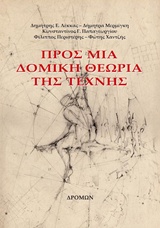
In Between Science, Ethics & Art (Greek)
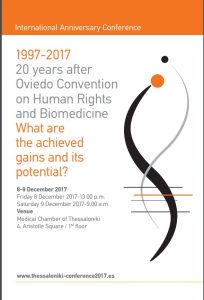
20 years after the Oviedo Convention on Human Rights and Biomedicine
Attempting to link these three concepts and to see what each of these means for the other

The Subtle Colourings of (informed) Consent in Sports Doping
It discusses in what way do athletes consent in using doping; can it just be a matter of black and white, consenting or not consenting? I argue that it is a more complex process and I suggest a method for exploring consent types.
After presenting a multipole of consent-cases, I argued that it is not just a matter of black or white as far as consent is concerned for the doped athlete. The athlete, any athlete, may come from the most diverse environments being forced to succeed at any cost; forced by whom? By their peers, their trainers, their broader environment. For the athlete, it may be a matter of life and death (as it was for e.g. USSR athletes, or as it partly is now for athletes who have spent a fortune in training academies only to try to make amends with their future success).
The very knowledge background of an athlete, or of their team, also plays a crucial role in their decisions. Issues of trust, ignorance, too much goodwill, wishful thinking, even habit, all come into play. Hence, we need a consent system that accounts for all these cases – and even more. How do we produce such a system? Should we create a catalogue of real cases and then try to find an adequate form of consent?
In contrast to usual scientific practices, this is both sub-optimal and contramethodological. Taking as our starting point the analytic method, we are able to create, a priori, all cases of consent; only after do we apply them (link them) to reality. Therefore, we get cases such as “uninformed consent”, “not uninformed consent”, “intentional uninformed consent”, but also “unintentional exposure”, “not unintentional protection” and hundreds of other consent-related propositions. The next step would be to attribute meaning to as many cases as possible and only then are we allowed to go to the world and discuss the athlete’s behavior in terms of consent.

The Subtle Colourings of (Informed) Consent in Performance Enhancement: Implications for Expertise
The analytic method, part of the epistemonic method, provides us with a way to cope with perplexed cases, without even referring to the world out there. We are able to predict all possible variations of consent, and go on forming minimum logical quadripoles, 8-poles, 16-poles, etc., before even trying to make any connection to the world. This way, there are two major outcomes: All possible scenarios are predicted, and, because of that, our “logical generator” produces scenarios we couldn’t even think of. Consent is, therefore, neither binary (existence or absence), nor just a continuum from existence to absence, but a cladistic tree stemming from the basic quadripole “existence of consent/not existence of consent/absence of consent/not absence of consent.” The complexity increases rapidly when other terms are included; try: “existence of informed consent” or “existence of unintentional consent.” More levels develop as we examine relevant terms, such as “exposure,” “protection,” or “consumption.” In our case-study, we shall examine how different aspects of consent are expressed regarding the issue of performance enhancement and consider some implications for the notion of expertise within an SEA (Science of Exceptional Achievement) context. Many different terms may describe the most common situations, namely, “uniformed consent,” “unintentional consent,” “non-intentional consent,” “not absence of consent,” and also, “unintentional exposure,” “intentional non-protection,” and so on. In Greek language, the possible variations are even more (there are two kinds of negation in Greek). All the aforementioned terms have different ethical consequences. We shall also examine whether doping is an inherent part of expertise attainment.
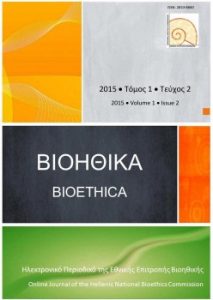
Talent as an unintentional agent
Unintentional exposure is a novel concept. No single person has coined the term. It mainly refers to
substances and activities affecting individuals without their consent – be it informed or not. In the
broader field of applied ethics in general, and of bioethics in particular, the scope of application
extends from nutrition (GM, functional food), to pollution (chemical-, air-, light-, noise-, radioactive
contamination etc.), climate change, embryo rights, drug side-effects (especially in regard to
chemotherapy), radiation (e.g. food), Permissible Exposure Limits, education and (bio-)terrorism. In
the discussion about talent and giftedness, there are two main approaches or schools of thought. On
one hand, talent is conceived as an exclusive agent, in that some individuals are born more capable
than others. On the other hand, a different school of thought advocates the modification of body and
mind of all individuals in order for them to achieve similar levels of high performance. In the first
case, individuals are bound to their nature, while in the latter instance they are prisoners of their
environment –two equivalent positions in terms of autonomy and freedom. The latter will be argued to
be the case; as a result, a connection with unintentional exposure will be established.
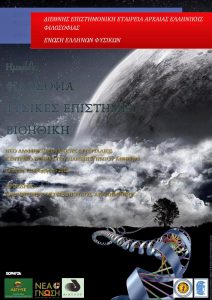
Epistēmē and (vs) Scientia
The identification of the terms epistēmē and scientia (>science) is considered given, both on the level of the signified and of the signifier. It is the first attempt ever to indicate the abyssal difference between these two terms; a difference resulting in grave consequences for the modern area of knowledge called science. Differences
pertain to the level of both terminology and methodology.
